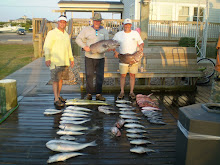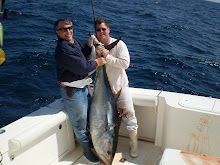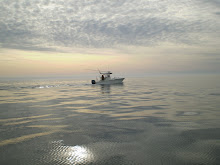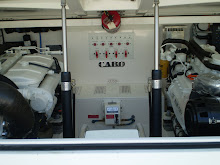I grew up in a farming community in north central Pennsylvania. I work on my grandfather’s 1,000 acre dairy, pig, beef and chicken farm during my summers. For fun during the rest of the year my dad and I raised beef and pigs on a separate 83 acres farm. With milk, cheese, meat, and eggs covered, we needed only nuts, fruits, and vegetables to complete the pantry. We dried nuts that we collected from neighboring farms. We scheduled trips to up-state New York to pick sour cherries in late spring and trips to local orchards for peaches, pears, and apples in the fall. In addition, our farm had the only stand of paw-paw (banana-like fruit) trees that I know of in Pennsylvania.
My dad’s truck patch (vegetable garden on steroids) was famous in our area. One year, my dad got a “deal” (Carl’s deals meant work for his kids) on cabbage plants. One thousand heads, which grew bigger than basketballs, were used to feed the community during the New Year's Day pork and sauerkraut dinner at the local volunteer fire company – yes I stomped and salted the sauerkraut. It took only six very long rows of potatoes to feed our extended family and neighbors for a year. When my friends needed one more baseball player to even the sides, they were willing to snap seven bushels of string beans to free me from my chores. Our sweet corn kettle was not filled with water for less than 500 ears of corn on a summer afternoon. Needless to say, I can blanch, freeze, dry, ferment, smoke, salt, and can food for use at a later time.
Freezing Fish
All of the above memories are from my childhood. At that time my fishing was limited to flounder fishing on my summer vacation at the Indian River Bay, near Rehoboth Beach, DE. Although we caught fish, we generally consumed the catch in the same afternoon. However, during my college years, I began to expand my saltwater fishing and eventually ran offshore. These trips resulted in bigger catches, and at times, more fish than could be consumed fresh. Due to a more hectic lifestyle in those years, I began to freeze excess fish. I cleaned, rinsed (with tap water), and froze the fish in zipper bags. The results were very disappointing when the fish was retrieved for a later meal.
 One day Dan told me that the fresh water was my problem. It washed away the oils needed to keep the fish tasting good. His solution was to bring ocean water back to my house to rinse and package the steaks/fillets. This process reduced the loss of oil and the water barrier kept the meat from freezer burn. However, I soon got tired of handling buckets of ocean water on the boat and in my truck. There had to be a better way to preserve fish.
One day Dan told me that the fresh water was my problem. It washed away the oils needed to keep the fish tasting good. His solution was to bring ocean water back to my house to rinse and package the steaks/fillets. This process reduced the loss of oil and the water barrier kept the meat from freezer burn. However, I soon got tired of handling buckets of ocean water on the boat and in my truck. There had to be a better way to preserve fish.A few years back FoodSaver announced the release of the Professional III model vacuum sealer. Now, my family had been using sealing devices for decades, but I did not find one that I like for preserving fish until this model. I found that by patting the steaks/fillets with a dry paper towel and sealing them in the heavy FoodSaver plastic, I was able to retrieve some pretty good quality fish from my freezer. I ate some killer cedar plank yellow fin with orange mayo on 2/3/2010, that my wife (pictured to the left) caught on 9/15/2009.
Canning
After a quick 250 mile round trip from Indian River to the Lindenkohl and back, in August 2008, we had more yellow fin tuna than we could eat fresh. Tony Burr, the captain for that trip, told me how he canned his excess tuna for use all year long. Since I had a pressure cooker, propane stove, canning jars, spring water, and olive oil, I decided to give it a try. I dropped various sizes of tuna loin chunks into the jars, up to about 1” from the top. I then covered the chunks with bottled spring water and a table spoon of olive oil up to ½” from the top. [Now I know I told you above that fresh water removed oil from the tuna. In this case, we will cook the tuna in the same jar with the natural oil and the olive oil.]
 Before sealing, be sure to clean the rim of the jar very well so that the lids seal properly. Place the lids in water and bring them to a boil before setting them with the jar ring. Now place the jars into a pressure cooker and fill it with water up to the rim of the jars. Bring the pressure cooker to a boil with the 10-PSI cap on the lid. Once the cap begins to shake from the release of steam, set your alarm for 100 minutes.
Before sealing, be sure to clean the rim of the jar very well so that the lids seal properly. Place the lids in water and bring them to a boil before setting them with the jar ring. Now place the jars into a pressure cooker and fill it with water up to the rim of the jars. Bring the pressure cooker to a boil with the 10-PSI cap on the lid. Once the cap begins to shake from the release of steam, set your alarm for 100 minutes.The bluefin will turn a light pink, while the yellowfin (pictured on the right) turns almost white. When this tuna is drained, it has a very mild tuna aroma and taste that can be enjoyed straight from the jar, or in any of your tuna recipes. Try saving some of your good times.









No comments:
Post a Comment